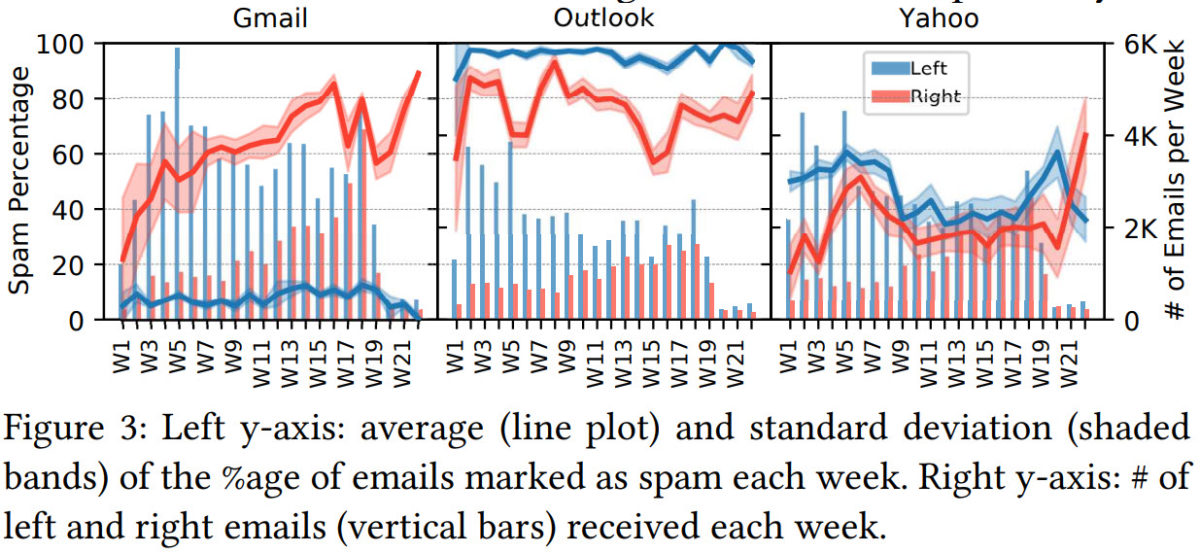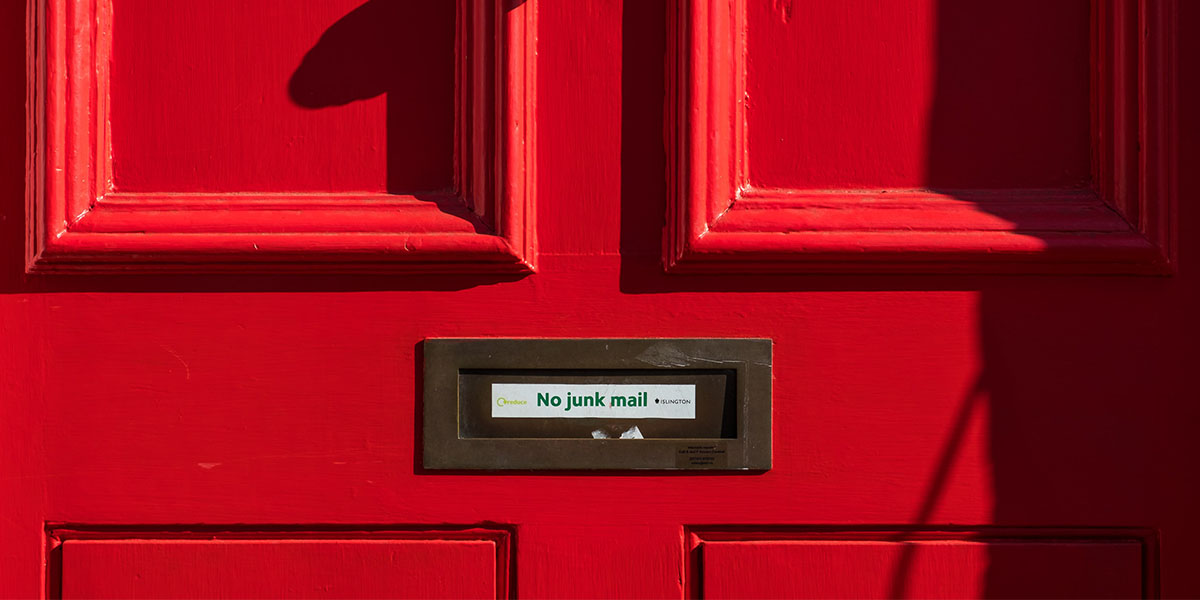Photo by Mediocre Studio on Unsplash
Making sure your emails reach your subscribers’ inboxes has always been difficult. Apparently, it’s not an even playing field, either, according to a recent study from North Carolina State University’s Department of Computer Science. “A Peek into the Political Biases in Email Spam Filtering Algorithms During US Election 2020,” found that:
We made several important observations in our study. For example, as an aggregate trend, Gmail leaned towards the left while Outlook and Yahoo leaned towards the right. Yahoo retained about half of all the political emails in inbox (up to 55.2% marked as spam) while outlook filtered out the vast majority of emails (over 71.8%) from all political candidates and marked them as spam,” the proposed methodology section continued. “Gmail, however, retained the majority of left-wing candidate emails in inbox (< 10.12% marked as spam) while sent the majority of right-wing candidate emails to the spam folder (up to 77.2% marked as spam).

Here are 6 tips to improve email deliverability and steer clear of spam filters:
- Maintain good list hygiene
- Personalize your recipients’ names
- Get on subscribers’ white list
- Keep your email code clean
- Set up domain authentication
- Test your campaigns and monitor their results
1 – Good List Hygiene
Email providers are letting you use their mail servers to send emails to large numbers of people. That’s the business they’re in. If their servers get black-listed for sending too many spam messages, their deliverability rates go down and their customers will leave. This means that they need to protect those servers from accounts that send low-quality emails.
The quality metrics they use to judge the quality of your list include:
- Bounce Rate – A “hard” bounce happens when you send an email to an address that doesn’t exist. This will frequently happen with old and/or purchased lists. Too many hard bounces will get your account suspended and/or terminated.
- Spam Reports – When readers unsubscribe from your list, if they report the message as spam, this is detrimental to your quality score. If they simply say, “I no longer wish to receive these emails,” that doesn’t have a negative impact. In fact, you should view it as a good thing because removing disinterested subscribers is the best way to improve your email list hygiene.
- Open Rates – Email providers have tools for measuring how many people open your emails. These tools are not perfect and can’t measure with 100% accuracy. However, they’re still the best measure we have regarding the effectiveness of your emails.
All of these metrics are factored together and can affect your emails’ deliverability. A good way to maintain a high-quality email list is to periodically perform re-engagement campaigns. Send an email to subscribers who haven’t opened any of your emails in the past 6 or 12 months. Simply tell them, “We noticed you haven’t been engaged with our emails and want to know if you’d like to stay subscribed. Please click on the link below to remain on our email list.” Give them a week or so and unsubscribe them if they don’t click.
2 – Personalize It
Spam filters are more likely to flag messages sent to just an email address without a name. Use merge fields to include the recipient’s name in addition to their email address. Using anonymous or free email address domains like Gmail can also result in more aggressive filtering. Using a registered domain is preferred but it can take time to build trust for new domains.
3 – Get On Subscribers’ White List
The single most important factor in escaping the spam folder is to get your subscribers to add your email address to their contact list. Be sure to mention this in the “thank you” message after someone subscribes to your list. You should also include this in your welcome email.
4 – Keep Your Code Clean
Email servers are more likely to identify messages as spam if they contain a lot of junky code. This is often invisible to you and can happen if you copy and paste content from Microsoft Word or other sources. If you must copy and paste, be sure to paste plain text so that none of the code garbage comes with it.
Also, keep your email templates clean and consistent. Less is more, especially for email. Remember that most of your recipients will likely be reading your emails on their phones. Fancy graphics and ornate designs that look great on a desktop are usually slow to load and difficult to read on mobile devices. They’re also more likely to get flagged as spam.
5 – Set Up Domain Authentication
Inbox Service Providers (ISPs) like Gmail, Yahoo, Hotmail, and many others want to make sure that email sent to their users is legitimate. There are security processes and protocols ISPs use to help filter malicious users and spam. Authenticating your domain with your email provider will substantially improve the likelihood that your emails will be viewed as legitimate. You can find Mailchimp’s domain authentication process here. Other email providers have similar functionality.
6 – Test and Monitor Results
Always monitor the results of your campaign using the reporting tools offered by your email provider. You’ll be able to see the number of unsubscribes, spam reports, opens, clicks, etc. You can compare these against industry benchmarks and against your own account history. Test different subject lines and different email templates to find the optimal approach.

